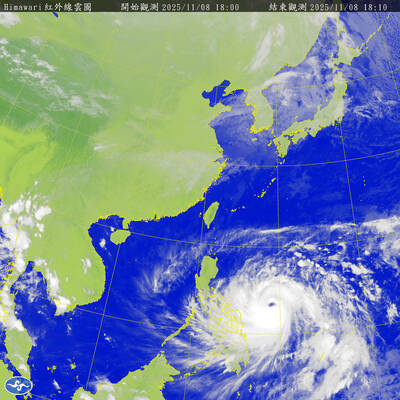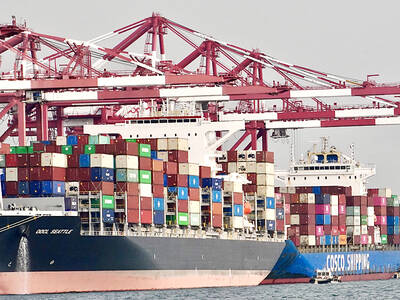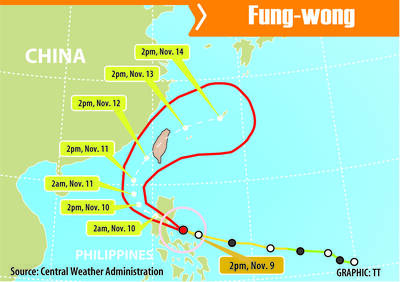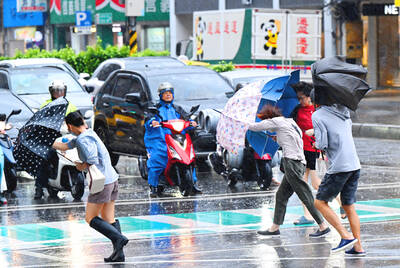China will find new ways to make the exchange rate of its currency more flexible even as it seeks to ensure its basic stability, the central bank said yesterday.
The central bank outlined its exchange rate policies for this year as its governor, Zhou Xiaochuan (周小川), met the press in Beijing, amid continued global concern about the yuan which many claim is kept deliberately undervalued to secure China an unfair trade advantage.
"The managed floating exchange rate regime will be further improved and the flexibility of the exchange rate will be enhanced," the central bank said in a statement prior to Zhou's press meeting.
"[We will] keep the exchange rate basically stable at an adaptive and equilibrium level," it said.
The managed floating exchange rate regime is China's way of describing a system which still appears to many observers to be tightly controlled by the authorities.
In July 2005, China delinked the yuan from the dollar and since then it has risen nearly 7 percent against the US unit, including a 2.1 percent revaluation at the time of the decision.
The yuan's daily trading band against the dollar is currently 0.3 percent on either side of a base rate set by the authorities at the beginning of each trading day but in practice, it has not come anywhere near that amount, sparking protests that Beijing still keeps the yuan on a tight rein.
Zhou gave no indication that the trading band of the yuan might be gradually expanded.
Zhou said later in the press conference that China needed time to reduce its trade surplus, a major bone of contention with its trade partners, especially the US which claims a weak yuan is a major contributor to the problem.
"There is an imbalance and it will take some time before adjustment measures can gradually produce results," he said, while noting that China's export costs are rising owing to higher labor and social security costs.
At the same time, China has taken a number of measures to boost imports, such as buying a large amount of raw materials from overseas, Zhou said.
"Both exports and import are growing. We have to see which one runs faster," he said.
China's trade surplus last year soared 74 percent to hit a record US$177.5 billion -- and totalled more than US$200 billion with the US alone, US figures showed.
Exchange rate policies could go some way toward making the surplus smaller, Zhou suggested in the briefing.
"The exchange rate policy can have a certain function as price leverage and can help adjust the balance between imports and exports," he said.
Commerce Minister Bo Xilai (
"We noticed that last year's trade surplus was relatively large so we've made the reduction of the surplus a macro-economic objective," Bo said in the China Securities Journal.
In the statement outlining tasks for the year ahead, the central bank also said it would push ahead with more market-based interest rates.
"The market-based interest rate reform will be actively and prudently pushed forward to establish a mechanism whereby interest rates are determined by market supply and demand and are responsive to monetary policy actions of the central bank," it said.
The central bank has tightened policy progressively in the past few years, seeking to cool an economy which grew at a breakneck 10.7 percent last year despite the government's efforts to slow it down to a more sustainable pace.

The Central Weather Administration (CWA) yesterday said it expected to issue a sea warning for Typhoon Fung-Wong tomorrow, which it said would possibly make landfall near central Taiwan. As of 2am yesterday, Fung-Wong was about 1,760km southeast of Oluanpi (鵝鑾鼻), Taiwan’s southernmost point, moving west-northwest at 26kph. It is forecast to reach Luzon in the northern Philippines by tomorrow, the CWA said. After entering the South China Sea, Typhoon Fung-Wong is likely to turn northward toward Taiwan, CWA forecaster Chang Chun-yao (張峻堯) said, adding that it would likely make landfall near central Taiwan. The CWA expects to issue a land

Taiwan’s exports soared to an all-time high of US$61.8 billion last month, surging 49.7 percent from a year earlier, as the global frenzy for artificial intelligence (AI) applications and new consumer electronics powered shipments of high-tech goods, the Ministry of Finance said yesterday. It was the first time exports had exceeded the US$60 billion mark, fueled by the global boom in AI development that has significantly boosted Taiwanese companies across the international supply chain, Department of Statistics Director-General Beatrice Tsai (蔡美娜) told a media briefing. “There is a consensus among major AI players that the upcycle is still in its early stage,”

The Central Weather Administration (CWA) yesterday said it is expected to issue a sea warning for Typhoon Fung-wong this afternoon and a land warning tomorrow. As of 1pm, the storm was about 1,070km southeast of Oluanpi (鵝鑾鼻), Taiwan’s southernmost point, and was moving west-northwest at 28 to 32kph, according to CWA data. The storm had a radius of 250km, with maximum sustained winds of 173kph and gusts reaching 209kph, the CWA added. The storm is forecast to pass near Luzon in the Philippines before entering the South China Sea and potentially turning northward toward Taiwan, the CWA said. CWA forecaster Chang Chun-yao (張峻堯) said

PREPARATION: Ferry lines and flights were canceled ahead of only the second storm to hit the nation in November, while many areas canceled classes and work Authorities yesterday evacuated more than 3,000 people ahead of approaching Tropical Storm Fung-wong, which is expected to make landfall between Kaohsiung and Pingtung County this evening. Fung-wong was yesterday morning downgraded from a typhoon to a tropical storm as it approached the nation’s southwest coast, the Central Weather Administration (CWA) said, as it issued a land alert for the storm. The alert applies to residents in Tainan, Kaohsiung, Pingtung and Taitung counties, and the Hengchun Peninsula (恆春). As of press time last night, Taichung, Tainan, Kaohsiung, and Yilan, Miaoli, Changhua, Yunlin, Pingtung and Penghu counties, as well as Chiayi city and county had